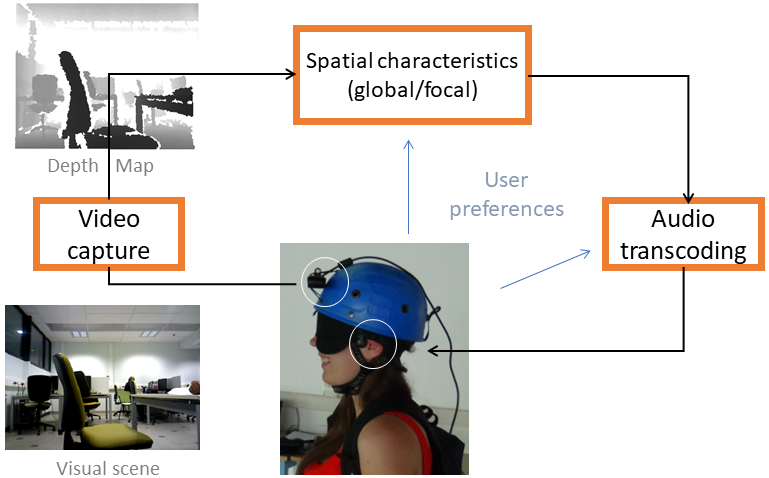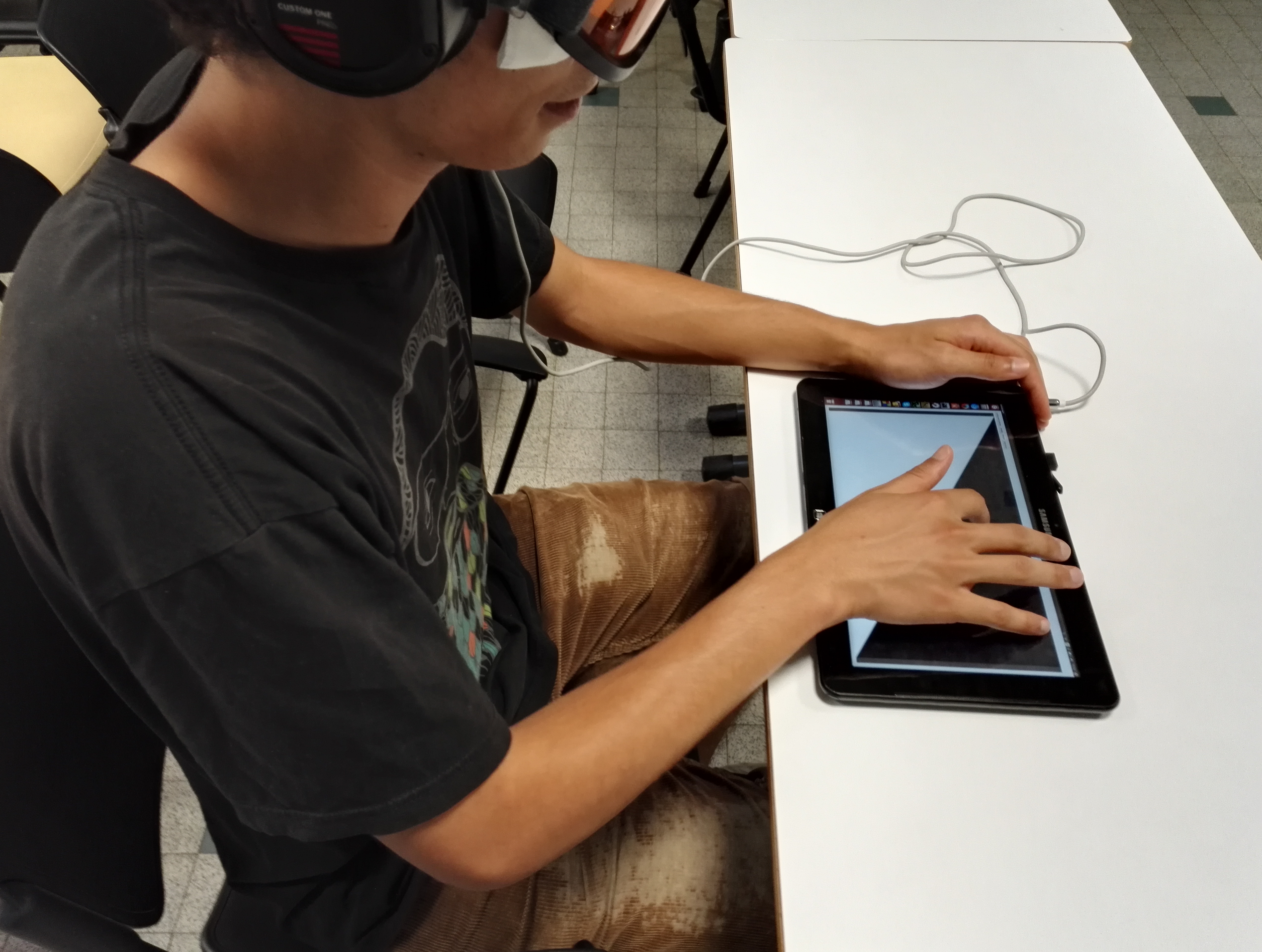Summary
1) Proposed a new model for image exploration relying on a touch-mediated visuo-auditive feedback loop, where a VIP explores an image by moving its finger across a screen and gets audio feedback based on the contents of the explored region.
2) Modified the existing AdViS system to include the ability to transcode grey-scale images into soundscapes, based on captured finger-motion information on a touchscreen (C++/PureData).
3) Organized experimental evaluations with blindfolded students, tasked with recognizing geometrical shapes on a touchscreen, and analyzed the results (R).
4) Participated in implementing an occular-motion-to-audio-feedback loop in order to evaluate the possibility of exploring images (on a turned off screen) with eye-movements (which are still controllable by most of the non-congenital VIP) (C++/OpenCV).



